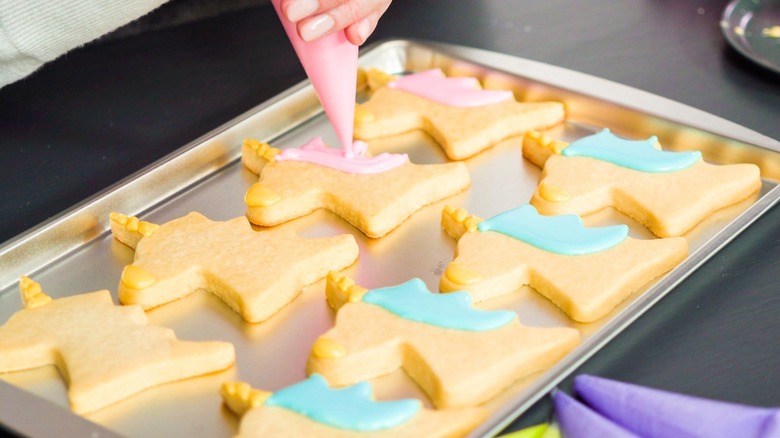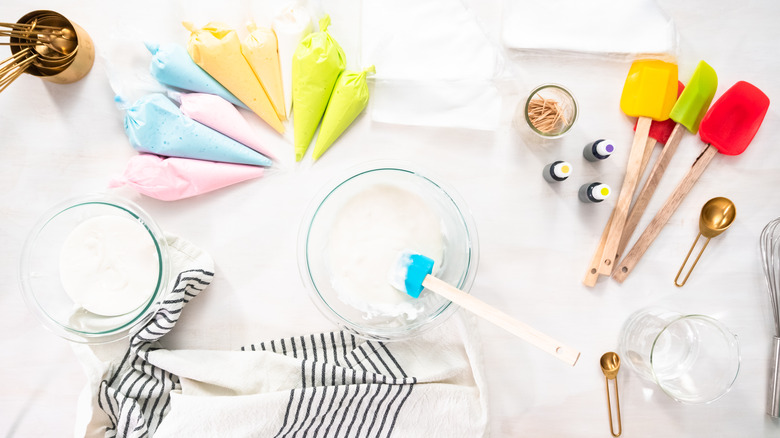The Biggest Technical Mistake To Avoid When Icing Cookies
With the right kind of icing and proper technique, you can create true works of art atop flat, cut-out cookies such as frosted sugar cookies or gingerbread. However, there's a reason not everyone turns out bakery-worthy iced cookies — it's a lot harder than it looks. Plus, there's one major technical mistake you might be making that compromises the appearance of your cookies.
Now, if you're spreading or piping a layer of buttercream frosting atop your cookies, you don't have to worry about running into this particular mistake. Buttercream is thick enough to stay in place. However, if you've opted to craft a more intricate design using royal icing, you must create an icing border before decorating the remainder of your cookie. This border is essential to keep the rest of the icing — especially flood icing — from running or dripping off the edges of your cookies.
You can thicken or thin royal icing according to your needs. For outlining cookies, the most stable option is piping consistency icing. The texture should be almost like toothpaste or pudding. You can also use piping consistency icing to create a framework for designs on cookies, leaving blank spots that can later be filled in with a runnier flood icing or for additional detailing atop your iced cookie to add extra dimension and visual interest. Check out our simple royal icing recipe as a starting point, and adjust as needed.
More tips for flawless cookie outlining
A cookie covered with royal icing typically takes around 12 to 24 hours to completely dry. But, you won't have to wait as long between outlining and filling the rest of your cookie with icing. Even a few minutes should be enough for the piped outline to create a stable border that prevents the remainder of your icing from sliding off the cookie and making a mess.
If you find the consistency of your royal icing isn't ideal for outlining, it's relatively simple to adjust. For a slightly thinner consistency, add water in small increments. Alternatively, if your icing is too runny, you can thicken it by incorporating powdered sugar, bit by bit, until your desired thickness is reached. There is also an unexpected ingredient (glycerine) you may want to consider using for a flawless finish.
Want to figure out if your icing is the right consistency for outlining before you bother putting it in the piping bag? Try doing an icing count. This involves making a small cut or line down the surface of your icing in the bowl you're mixing it in and seeing how many seconds it takes for the line to smooth out and disappear. The quicker it does so, the runnier your icing will be. Everyone has different preferences, but for outlining purposes, you ideally want an icing count of between 15 and 25 seconds.

